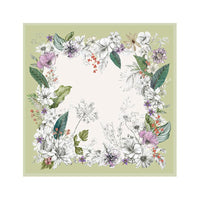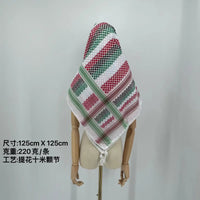Wheat, Olives, and Honey: The Stories Behind the Keffiyeh's Stitching
The white cotton keffiyeh, adorned with its distinct black stitching, is more than just a piece of clothing for Palestinians. It's a canvas for countless interpretations and symbolic meanings, each one as unique as the wearer themselves.
Some see the stitching as a fishing net, a symbol of collectivism and the strength that comes from working together. Others interpret it as a honeycomb, a nod to the region's beekeepers and the sweet, golden honey they produce. And still, others believe it represents ears of wheat, a tribute to Jericho, the ancient city where grain cultivation first took root.
But for Palestinian performance artist Fargo Tbakhi, the stitching holds a deeper meaning. He sees it as a representation of barbed wire, that ever-present symbol of occupation. Yet, despite its dark connotations, he finds solace in the fishing net design, or fatha, as it reminds him of the power of unity and collective strength.
"To me, the keffiyeh is a symbol of our identity, a model for being Palestinian," Tbakhi writes in the Los Angeles Review of Books. "It articulates one possible future for our people, where we are knotted together, stronger and more resilient."
Palestinian author Susan Abulhawa echoes this sentiment, explaining that the patterns on the keffiyeh "speak to Palestinian lifeblood." Like the intricate designs of tatreez, or Palestinian embroidery, the stitching tells stories of location, lineage, occasion, and historic significance.
And then there's the olive tree interpretation, a symbol of strength and resilience that holds a special place in Palestinian culture. The 'bird-like' motifs along the border of the keffiyeh are interconnected olive leaves, a nod to the importance of olives in Palestinian life. From olive oil to soap to wood, olives have played a crucial role in Palestinian culinary, social, and economic life for centuries.
"Olive trees provided not just sustenance and income, but also served as the backdrop for important social and national events," Abulhawa explains. "They're present in our poetry, songs, tatreez, food, folklore, and familial lore. And the geometric long borders in the keffiyeh denote the trade routes that brought products to and from Palestine, connecting us to the world beyond our borders."
So the next time you see someone wearing a keffiyeh, take a moment to appreciate the stories and meanings woven into its stitching. It's not just a piece of cloth, but a symbol of Palestinian identity, history, and resilience.





